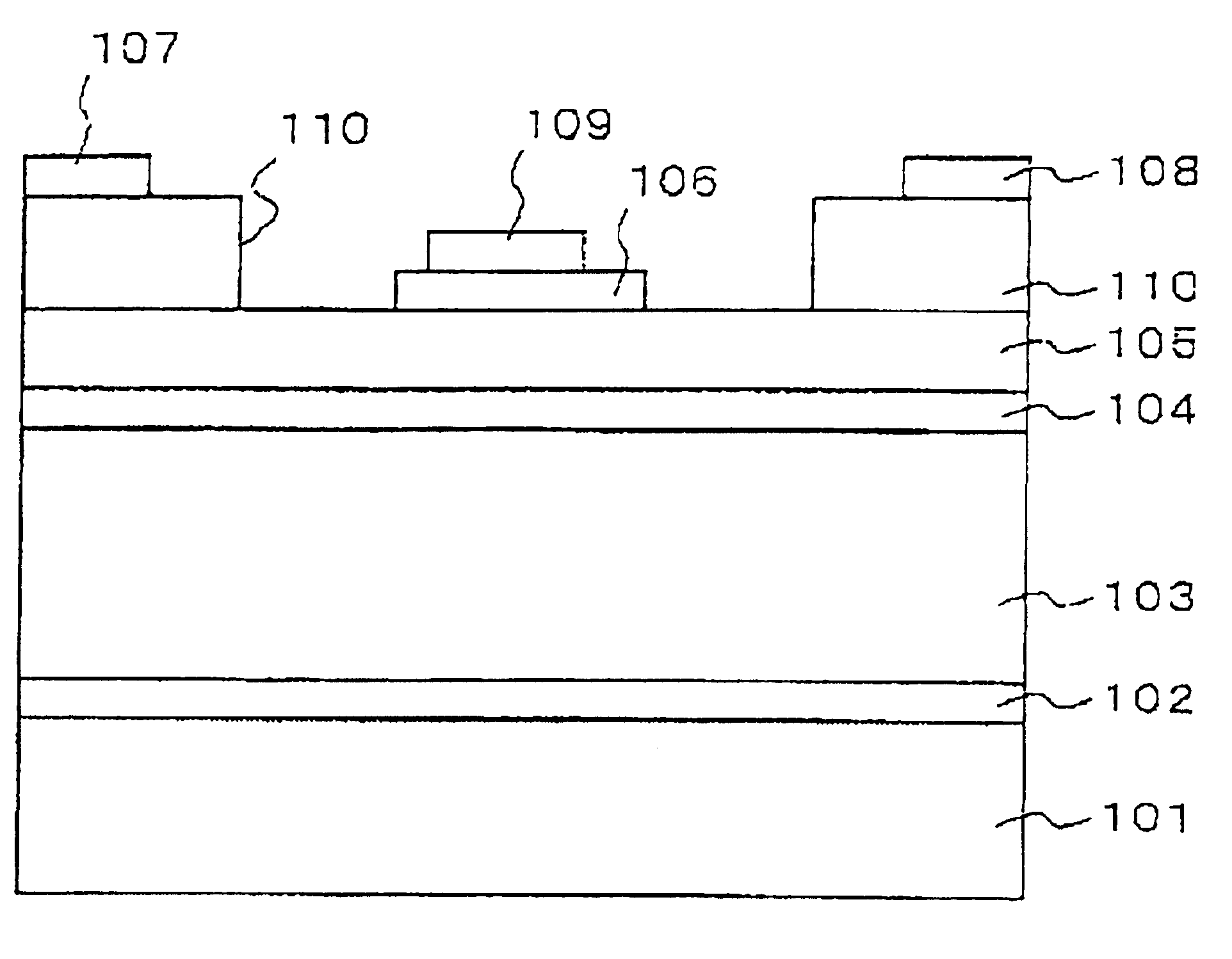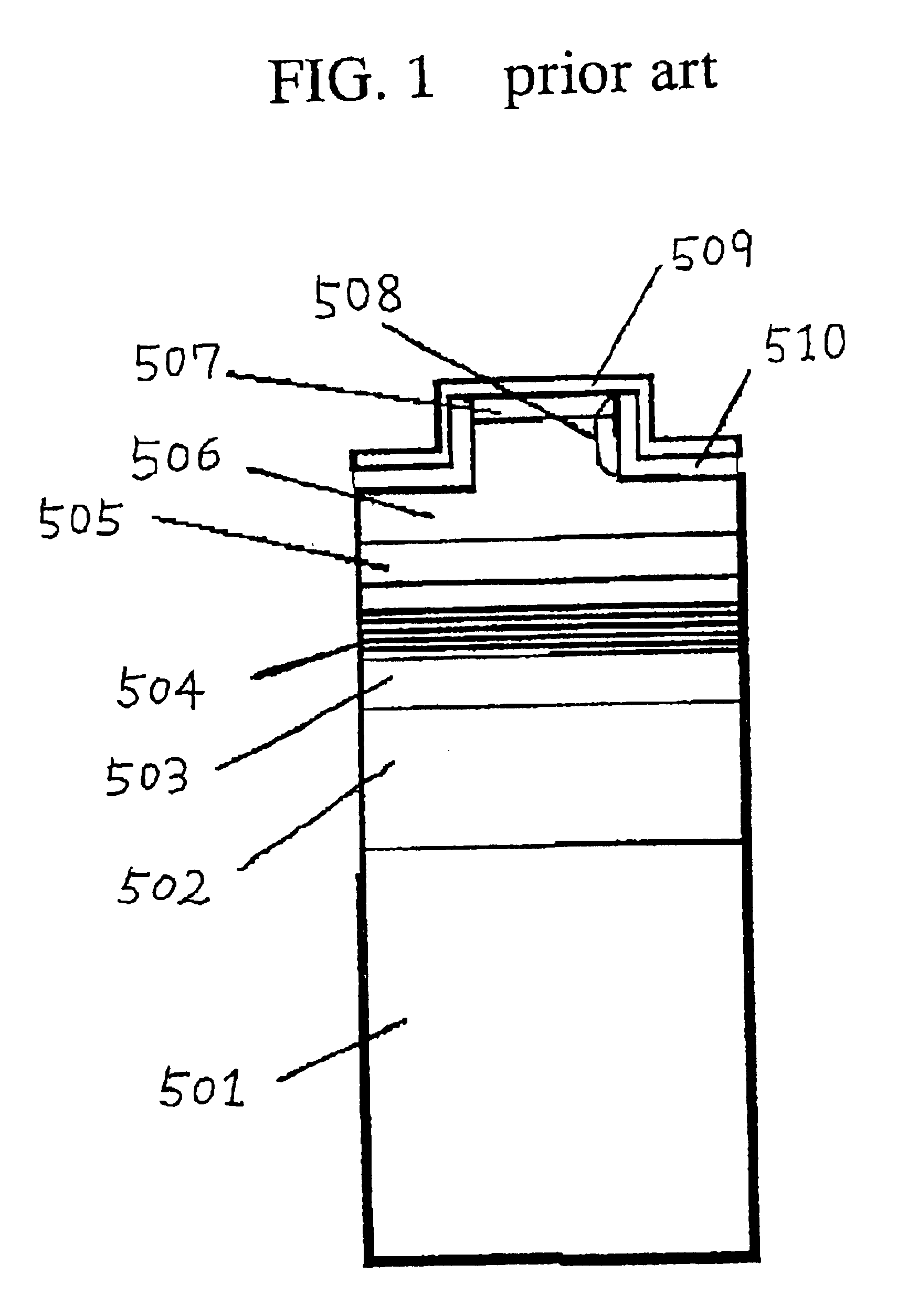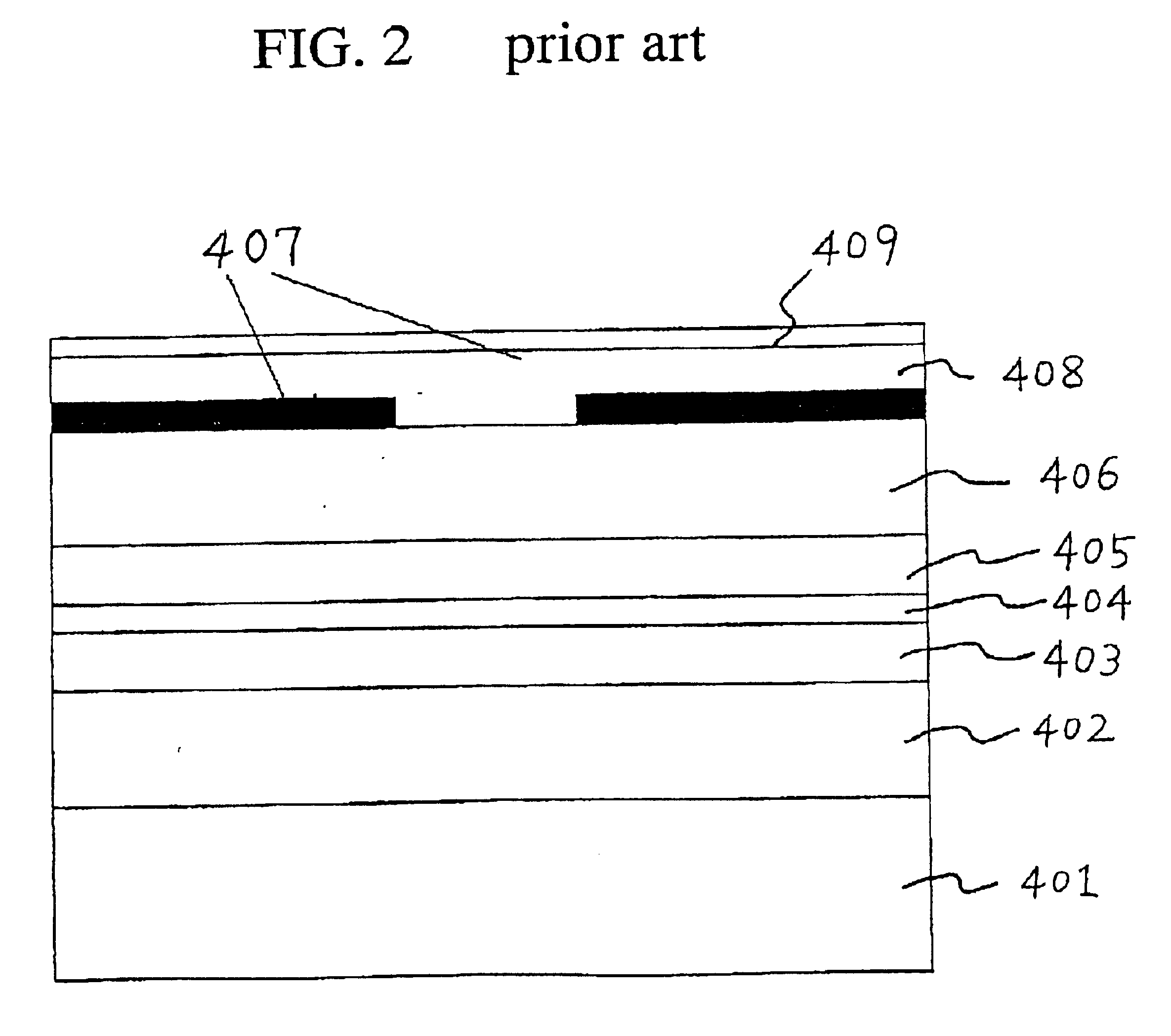Method for forming group-III nitride semiconductor layer and group-III nitride semiconductor device
a technology of nitride semiconductor and semiconductor layer, which is applied in the field of forming a groupiii nitride semiconductor layer and a groupiii nitride semiconductor device, can solve the problems of nitride semiconductor, damage to the active layer of the device, and difficulty in realizing a high yield of the device over a large area, so as to reduce the leakage of current, prevent the undesired mass-transport, and suppress the undesired mass-
- Summary
- Abstract
- Description
- Claims
- Application Information
AI Technical Summary
Benefits of technology
Problems solved by technology
Method used
Image
Examples
example 1
The following example 1 is involved in the above-described embodiment shown in FIG. 3. An n-type GaN layer with a (0001)-plane and a thickness of 250 micrometers was grown over a sapphire substrate by use of a facet-initiated epitaxial lateral overgrowth method which is disclosed by A. Usui et al. in Japan of Journal Applied Physics 36 (1997) L899. After the growth of the n-type GaN layer, the substrate was then subjected to a cooling process in which the n-type GaN layer was peeled from the sapphire substrate due to a significant difference in thermal expansion coefficient between GaN crystal and sapphire crystal, whereby the substrate was a free-standing GaN substrate with a thickness of 200 micrometers.
For forming a device structure, a low pressure metal organic vapor phase epitaxy system was used for epitaxial growth under a low pressure of 300 hPa. A mixture gas of hydrogen and nitrogen was used as a carrier gas. A trimethyl gallium gas (TMG), a trimethyl aluminum gas (TMA), an...
example 2
The “multi-layered structure growth processes” were carried out in the same manners as in Example 1 to form the lamination structure of the above n-type GaN buffer layer, the above n-type AlGaN cladding layer, the above n-type GaN guide layer, and the above InGaN multiple quantum well active layer, the above p-type GaN guide layer and the amorphous AlN layer for a current confinement layer. The growth of the amorphous AlN layer was carried out at the substrate temperature of 400° C. The wafer was then loaded into a normal pressure anneal reactor, and 1 SLM of oxygen and 4 SLM of nitrogen were supplied for causing a surface oxidation of the wafer at 400° C. for 20 minutes.
Subsequently, the “stripe-shaped opening formation process” was then carried out in the same manner as in Example 1 for forming the above stripe-shaped opening in the amorphous AlN layer.
Subsequently, the “multi-layered structure re-growth processes” were then carried out in the same manner as in Example 1 for growi...
example 3
An amorphous GaN layer was growing on a single crystal GaN layer at a temperature of 350° C. before the amorphous GaN layer was then subjected to a selective wet etching, by use of the single crystal GaN layer as an etching stopper and of a hot etchant of 95° C. which contains phosphate and sulfate at 1:1 ratio. The etching rate was that etching by 0.1 micrometer depth takes a time in the range of 20-40 minutes. The wet etching process was terminated when the surface of the single crystal GaN layer underlying the amorphous GaN layer, whereby a “Sample-D” was obtained.
Similarly, another amorphous GaN layer was grown on another single crystal GaN layer at a different temperature of 400° C. before the amorphous GaN layer was then subjected to a selective wet etching, by use of the single crystal GaN layer as an etching stopper and of the same hot etchant of 95° C. which contains phosphate and sulfate at 1:1 ratio. The etching rate was that etching by 0.1 micrometer depth takes a time i...
PUM
| Property | Measurement | Unit |
|---|---|---|
| temperature | aaaaa | aaaaa |
| temperature | aaaaa | aaaaa |
| dislocation density | aaaaa | aaaaa |
Abstract
Description
Claims
Application Information
 Login to View More
Login to View More - R&D
- Intellectual Property
- Life Sciences
- Materials
- Tech Scout
- Unparalleled Data Quality
- Higher Quality Content
- 60% Fewer Hallucinations
Browse by: Latest US Patents, China's latest patents, Technical Efficacy Thesaurus, Application Domain, Technology Topic, Popular Technical Reports.
© 2025 PatSnap. All rights reserved.Legal|Privacy policy|Modern Slavery Act Transparency Statement|Sitemap|About US| Contact US: help@patsnap.com



